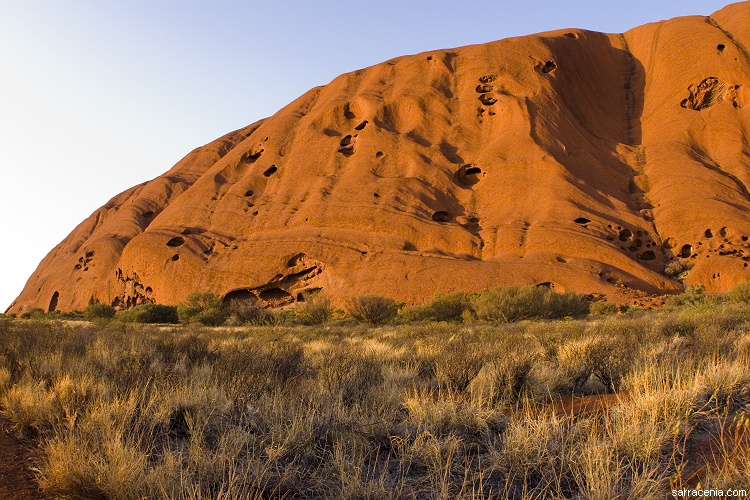
Uluru:
The Australian bureau of tourism would restrict my future visitation rights if I did not include
at least one photograph of Uluru (as well as one reference to Vegemite). I have now discharged both responsibilities
successfully.
Uluru is spectacular--an enormous sandstone domed inselberg looming in the otherwise dead-flat Australian outback.
The Anangu Aboriginal people revere it as a feature of great spiritual significance; the non-Aboriginal people
similarly revere it as a UNESCO World Heritage Site. By any metric, it is an amazing thing to visit and walk around.
Although inselbergs of Africa and South America can be biodiversity hotspots for carnivorous plants,
there is not enough water (or soil) on Uluru to support carnivorous flora. Even so, I kept my eyes open for them
since at least D. indica is purported to occur in the drainages
in the area or even at its base.
As it was well into the dry season, there were no carnivorous plants visible. All I found that really
surprised me were the dried
grasses in the foreground of this image--an invasive African grass called Cenchrus ciliaris.